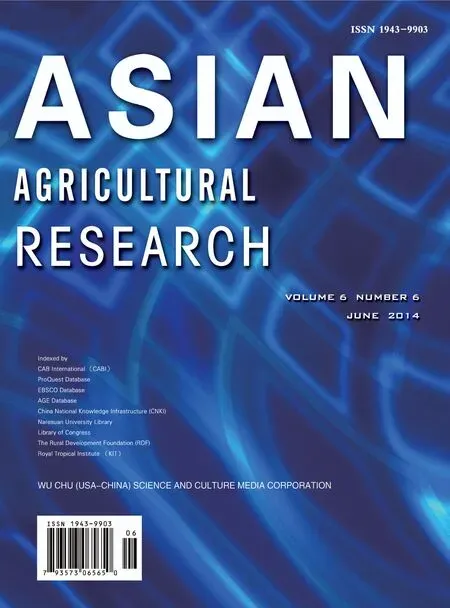The Estimation Methods for Agricultural Surplus Labor Based on Stochastic Frontier Production Function
2014-04-10ChaozhouLUYanfenLUO
Chaozhou LU,Yanfen LUO
Department of Business and Trade,Rongchang Campus,Southwest University,Chongqing 402460,China
1 Introduction
A lot of literature believes that there is agricultural surplus labor in China,but for its number,different scholars use different calculation methods and the results vary widely.The common calculation methods for the number of agricultural surplus labor mainly include three types.The first is to use labor-land ratio for estimation.The second is to use agricultural production function for estimation,and describe the production of agricultural sector according to the Cobb-Douglas production function or variable elasticity of substitution(VES),thereby calculating the number of agricultural surplus labor.The third is to calculate based on the optimization model of production resource allocation.
For the first method,the number of agricultural surplus labor is only assumed to be related to land and the number of agricultural labor,but not to be related to the number of effective labor;for the second and third methods,the calculation results are closely related to the setting of the form of the production function,the selection of different production functions will cause different estimation results,and both of them fail to reflect the impact of technical efficiency changes on the surplus labor in agricultural production.When the agricultural production technical efficiency is very low,the output will be very low in the case of the same amount of factor inputs,or at the same level of output,the amount of factor inputs is excessive.
Conspicuously,the excess amount of factors is closely linked with the production technical efficiency.The excess amount of factors will increase along with the improvement of technical efficiency.In other words,if the output is maintained unchanged,the amount of factors needed will be less along with the improvement of technical efficiency.In terms of the agricultural labor,with the improvement of agricultural production technical efficiency,if the agricultural labor needed is less,there will be more surplus labor.
Using the stochastic frontier production function,this paper first measures the annual agricultural production efficiency in various provinces during the period 1995-2004,and then it selects the province with the highest technical efficiency as the representative,and believes that various factors have been fully utilized in this province during the agricultural production,there is no agricultural surplus labor,and the amount of labor needed per unit of output in the province is the amount of effective labor.Finally,according to the ratio of actual amount of labor per unit of output to the amount of effective labor per unit of output in other provinces,it measures the number of agricultural surplus labor in various provinces.This estimation method can reflect the relationship between the number of agricultural surplus labor and production technical efficiency.
2 The basic principles of stochastic frontier production function
2.1 Technical efficiencyIn the case of established technical conditions and total amount of resources,if resources are fully utilized,then the output should be in the production possibility frontier,and if the observed output point falls within the production possibility frontier,it indicates that the resources have not been fully utilized,as shown in Fig.1.
Point I in Fig.1 means that the resources are fully utilized,so the production is in the state of perfect technical efficiency;Point Hmeans that the resources are not fully utilized,so the production is in the state of non-perfect technical efficiency.
According to the distance relationship between production inefficiency point and the production possibility frontier under the same input,the technical efficiency of a production unit can be measured.Taking the single factor input for example,the estimation of technical efficiency is shown in Fig.2.
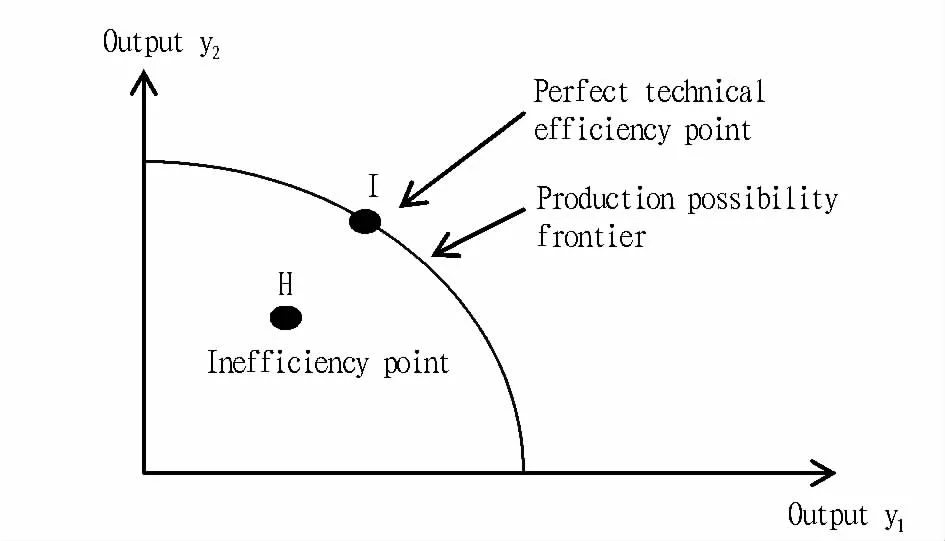
Fig.1 The production possibility frontier
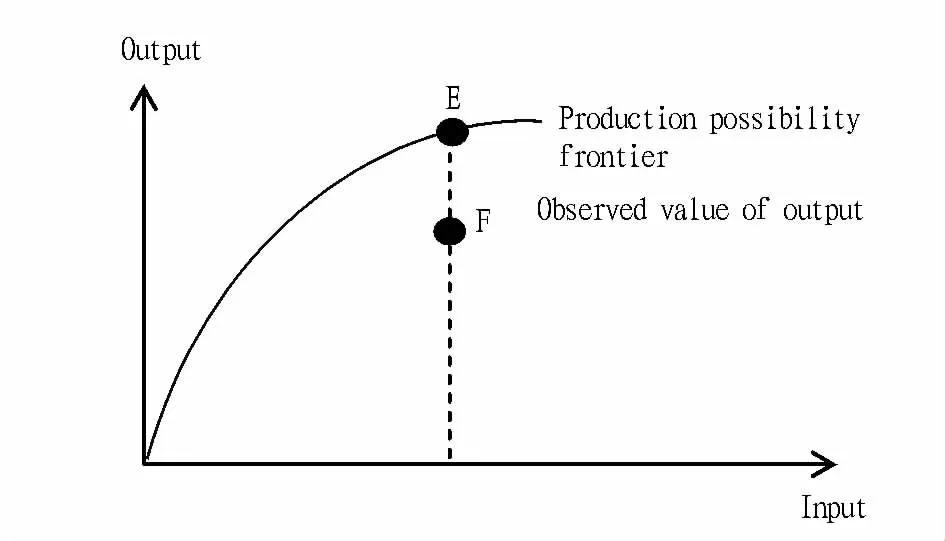
Fig.2 The production technical efficiency
In Fig.2,assuming the input is at point G,if the resources are fully utilized,and the technique is brought into full play,the output should be at point E,namely at the production possibility frontier line;if the observed output is at point F,namely below the production possibility frontier,it indicates that the production does not meet the perfect technical efficiency.
The technical efficiency(TE)of point E,F is calculated as follows:
Point E:TEE=GE/GE=1;Point F:TEF=GF/GE.
2.2 Stochastic frontier production functionThe production process in the state of perfect technical efficiency exists only in theory,that is,the production possibility frontier in the real production can not be observed.In reality,we can only observe the actual amount of inputs and outputs,and based on actual observed values,we can only calculate the actual production function,but fail to calculate the production possibility frontier.
If we build the external output envelopment frontier based on the actual observed values of input and output so that all the observed values of output are below the frontier and close to it as far as possible,then this frontier is called frontier production function,and it can replace the production possibility frontier,as shown in Fig.3.
Further,the formation of production possibility frontier can be viewed as the result of joint action of the determining factors and random factors,and the production possibility frontier built according to this method is called stochastic frontier production function.
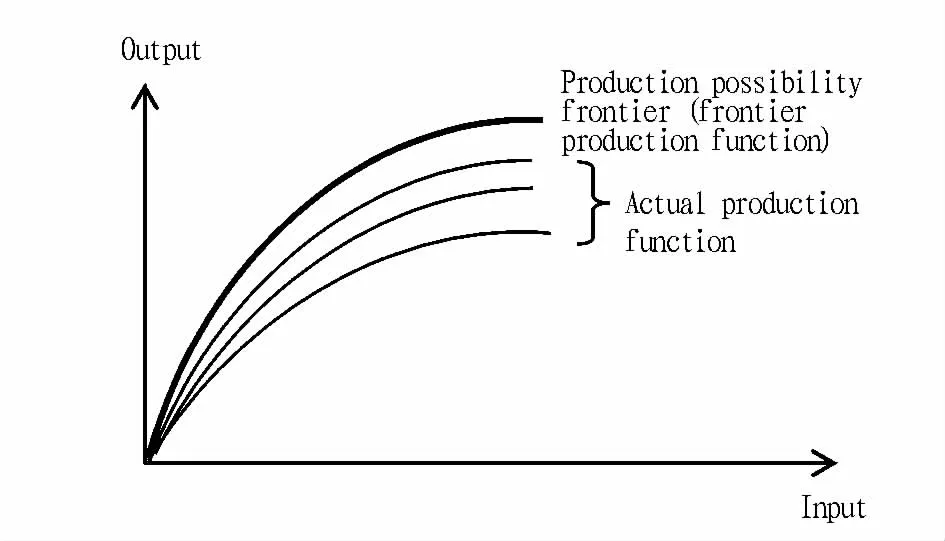
Fig.3 The frontier production function
The determining factor is the actually observed value of inputs and outputs.The random factors include the following two types:
(i)The first type is the random factors beyond the control of the production units,such as weather and luck,which will lead to fluctuations in the observed value of output of the same production unit with the same input in different time periods,and will also lead to differences in the observed value of output between different production units with the same inputs even in the case of the same technical efficiency.
The error v between the observed value of output with the same input and the maximum possible output,caused by the uncontrollable random factors,is a bilateral error which can be positive or negative.
(ii)The second random factor is caused by the mismanagement of production units,and since the level of management of the same production units in different time periods or since the level of management of different production units is inconsistent,the observed value of output is not the same in the case of the same input and the same"natural"conditions.
The error u between the actual output and the maximum possible output,caused by the level of management,is a unilateral error less than zero.
The two random factors jointly affect the error between the actual output and the production possibility frontier.The stochastic frontier production function model developed by Aigner,Lovell and Schmidt(1977),Meeusen and van den Rroeck is as follows:
Let the production function be:

Take the logarithm to get the following form:

where observation point i=1,2……N;yiis the output logarithm value of observation point i;xiis the input logarithm value of observation point i;viis the random bilateral error;uiis the random unilateral error greater than zero.
According to the frontier production function estimated by the above equation,it is determined by the distribution characteristics of the random error term.
Assuming that viand uiare independently distributed,vi-N
Based on the derivation of M.A.Weinstein(1964),there is:

For N observation points,the log-likelihood function can be constructed:

Seek partial derivative ofβ,λ,σ2,respectively,and let it be zero,the equation can be obtained as follows:

uiBy calculating the optimal solution of linear programming of the above equations,we can get the estimated value ofβ,λ,σ2,and thus calculate the frontier production function.
2.3 The calculation of the number of agricultural surp lus laborIn reality,the agricultural labor forces in the agricultural sector all participate in productive labor,but from the whole country,there is an underutilized state for the agricultural labor,or,under given output,the agricultural labor input is excessive.In theory,the technical efficiency of part of the labor can be considered as1,namely having the perfect technical efficiency while the technical efficiency of another part of the labor can be considered as0,namely in the perfectly inefficient state,with the marginal product is0.
2.3.1 The agricultural production technical efficiency of the Chinese provinces and cities.Let the logarithmic form of agricultural production function of the Chinese provinces be:

where A is the actual out put value of agriculture;K is the total machinery power;H is the application rate of chemical fertilizer;T is the effective irrigation area;N is the number of agricultural labor;B is the number of large livestock.
The error between annual frontier production function and actual production function is:(v-u),viand uiare independently distributed,
The data are collected from the agricultural input and output data of 30 provinces and cities except Chongqing in the period 1995-2004.
According to the basic solving methods for the stochastic frontier production function,using FRONTIER(Version 4.1)software,we calculate the technical efficiency of various provinces in different years based on the panel data of agricultural input of 30 provinces and cities in the period 1995-2004,and the real agricultural output calculated with the prices in 1978 as the base year prices,as shown in Table 1.
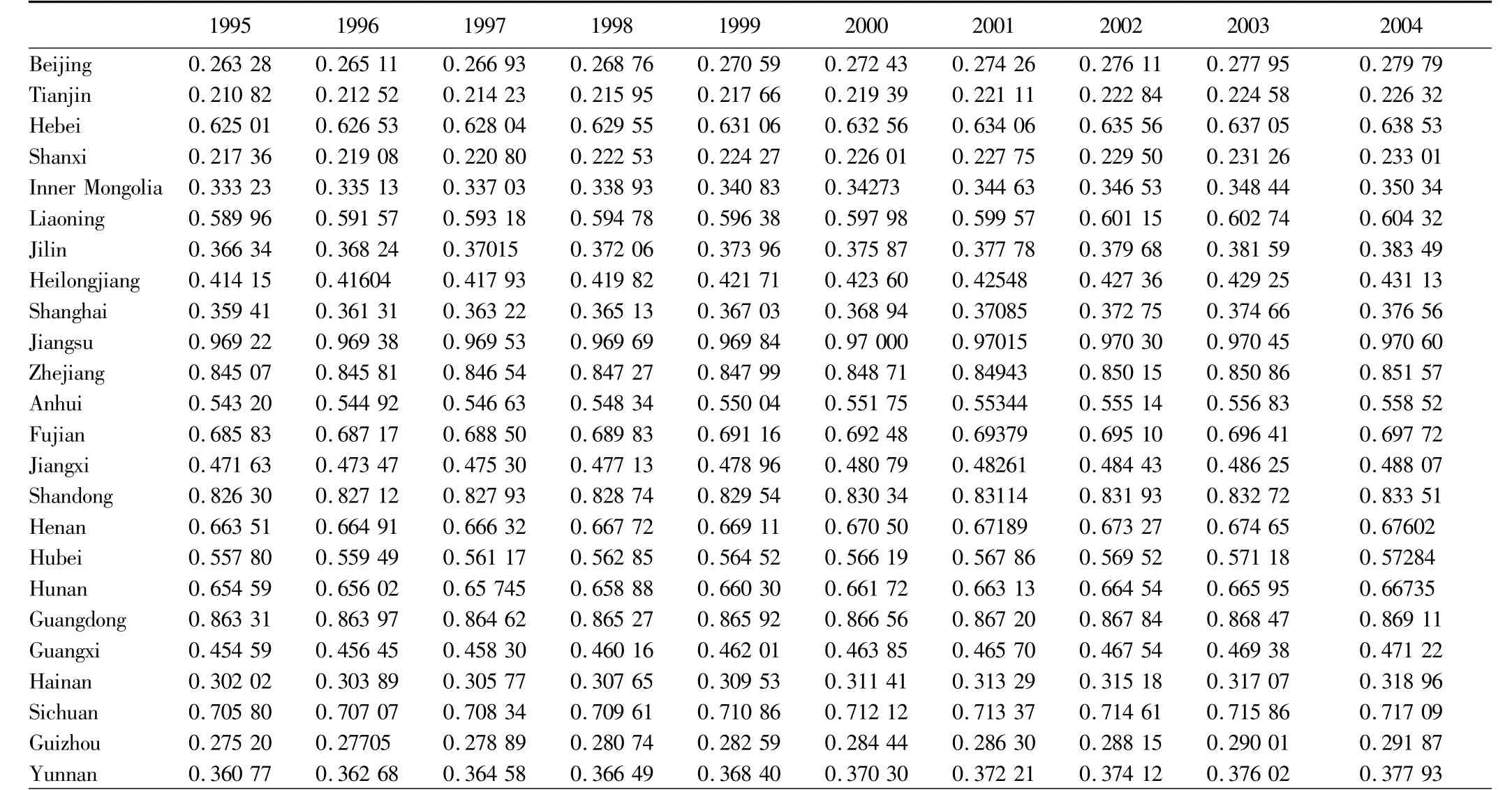
Table 1 The technical efficiency of various provinces and cities in the period 1995-2004

(Continued Table 1)
2.3.2 The number of agricultural surplus labor in various Chinese provinces and cities.From the annual technical efficiency of various provinces and cities in Table 1,it can be found that the agricultural production technical efficiency is the highest in Jiangsu Province,and its technical efficiency is at around 0.97,close to 1,that is,it is close to perfect technical efficiency state.We can believe that factor inputs of Jiangsu Province have been fully utilized during the agricultural production,that is,the number of surplus labor in Jiangsu Province from 1995 to 2004 was close to 0.
Meanwhile,the agricultural output of Jiangsu Province accounts for about8%of the country's total agricultural output,and this proportion is higher than the proportion of agricultural output of other provinces except Shandong and Henan.
The agricultural production technical efficiency of Jiangsu Province is close to 1,and its output accounts for a high proportion of national agricultural output,so the agricultural production of Jiangsu Province can be considered as the representative of the Chinese agricultural production in the case of full utilization of factors.The number of per unit of labor required for agricultural output in Jiangsu Province can be regarded as the number of effective labor per unit of output in China's agricultural production.Based on this,we can calculate the annual number of agricultural surplus labor of various provinces and cities.
The number of effective labor per unit of output=The number of agricultural labor in Jiangsu Province/Total agricultural output value in Jiangsu Province
v is defined as the proportion of effective labor to agricultural labor,then:

u is defined as the proportion of inefficient labor to agricultural labor,then:

According to formula(1),(2),we can calculate the number of surplus labor(SN)in one province:

Using the production data concerning the agricultural sector and the above three formulas,we can calculate the annual number of agricultural surplus labor of various provinces and cities,as shown in Table 2.
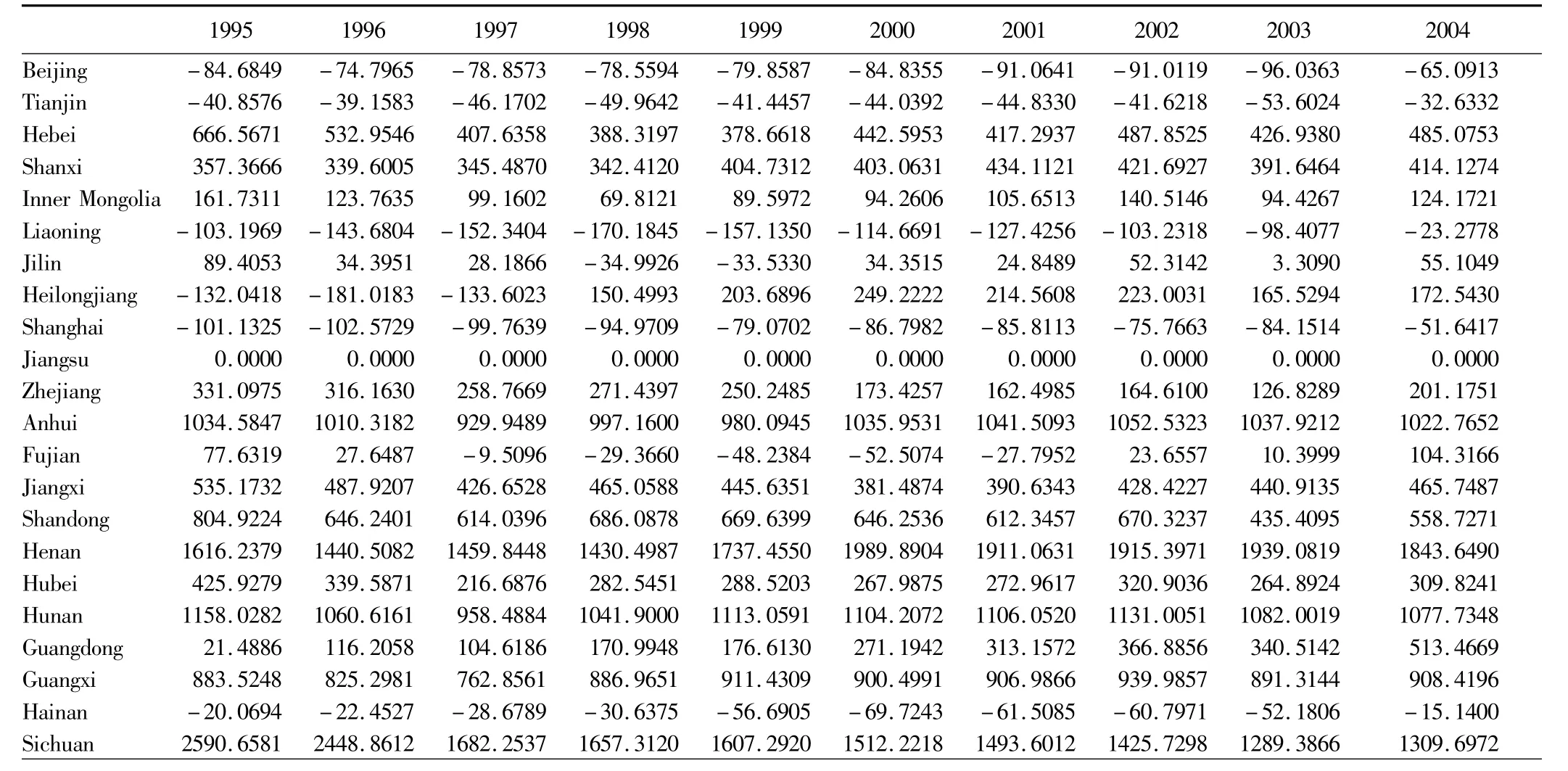
Table 1 The number of agricultural surplus labor of various provinces and cities in the period 1995-2004 Unit:104 people

(Continued Table 2)
3 Conclusions
When the agricultural production technical efficiency is very low,the output with the same amount of factor input is very low,or at the same level of output,the amount of factor input is excessive.Conspicuously,the excess amount of factors is closely related to the production technical efficiency.The excess amount of factors will increase along with the increased technical efficiency.
In other words,if output remains unchanged,with the increasing technical efficiency,the number of factors required will be smaller.In terms of the agricultural labor force,with the increasing agricultural production technical efficiency,the agricultural labor needed will be less and the surplus labor will be more.The existing calculation methods for the number of agricultural surplus labor all fail to reflect the impact of technical efficiency changes in the agricultural production on the surplus labor.
In this paper,we use the basic principle of stochastic frontier production function to calculate the agricultural production technical efficiency of various provinces and cities.And we select the province(Jiangsu Province)with the highest technical efficiency to assume that its agricultural labor is fully utilized,and there is no agricultural surplus labor.
With the ratio of agricultural labor number to agricultural output value in this province as a reference,we calculate the number of agricultural surplus labor in other provinces.It turns out that the national agricultural surplus labor is about 126 million in recent years.This calculation method makes up for the shortcomings of the existing calculation methods,and it reflects the relationship between the number of agricultural surplus labor and production technical efficiency.
[1]XIONGZY,YUD.A shortcut tomeasureun employment in China[J].Statistical Research,2004(7):56-58.(in Chinese).
[2]National Bureau of Statistics.The quantitative research on surplus rural labor force
[J].TheWorld of Survey and Research,2002(3):18-21.(in Chinese).
[3]YANG DQ,HAN L.Measuring application efficiency of factors based on VES production function[J].Science&Technology Progress and Policy,2005,22(1):170-172.(in Chinese).
[4]WANGHL.A method to estimate the number of surplus labor force in our rural areas[J].Statistical Research,1998,15(1):48-50.(in Chinese).
[5]ZENG XY,WU YH,ZHENGDY.Random DEAmodel and its application[J].Systems Engineering—Theory&Practice,2000,20(6):19-24,64.(in Chinese).
[6]Aigner,D.J.,C.A.K.Lovell,P.Schmidt.“Formulation and estimation of stochastic frontier production function models”[J].Journal of Econometrics,1977:6.
[7]Battese,G.E.,T.J,Coelli.“Prediction of firm-level technical efficiencies with a generaliazed frontier production function and panel data”[J].Journal of Econometrics,1987:38.
[8]XIAOD,HU HH.Data envelopment analysis and maximum likelihood estimation[J].Systems Engineering Theory·Methodology·Applications,1996,5(1):46-50.(in Chinese).
[9]LIU YS.Economic dualism[M].Beijing:Economic Science,1989.(in Chinese).
[10]John C.H.Fei.The development of labour surplus economy[M].Beijing:Economic Science Press,1992.(in Chinese).
[11]Yair Mundlak.Agriculture and economic growth:Theory and measurement[M].Beijing:Economic Science Press,2004.(in Chinese).
杂志排行
Asian Agricultural Research的其它文章
- Research on Factors Influencing Fertilizer Application of Farmer Households in Anhui Province
- Study on Causes of Slow Progress in Promoting the Application of Food Traceability System in China
- Numerical Simulation and Moist Potential Vorticity Analysis of Torrential Rain in Jiangxi Province during June 2010
- Evaluation on Optimal Scale of Rural Fixed-asset Investment-Based on Microcosmic Perspective of Farmers' Income Increase
- On the Poverty in the Rocky Desertification Areas of Southwest China Based on AHP:A Case Study of Liupanshui City in Guizhou Province
- Countermeasures for Tobacco Branding and Industrial Development in Enshi Prefecture
